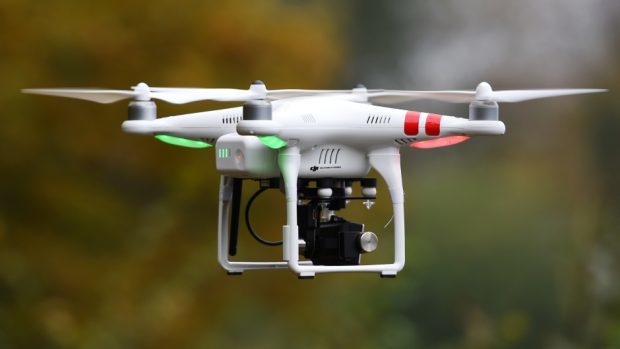Waiting in for a parcel to be delivered is one of the least appealing aspects of our modern shopping habits.
A day off just to be home for a courier who can only vaguely promise to be at your home sometime in a ten-hour window is a waste of valuable time.
It is though just one of the many inconveniences that could soon be eliminated thanks to the emergence of drones.
And this marvel of miniaturisation is also poised to revolutionise some unexpected areas – including architecture and construction.
An unmanned aerial vehicle (UAV), or drone usually looks like a quadracopter, a helicopter with four rotors which counter rotate so that the vehicle can hover in place.
Advances in electronics have allowed for the creation of tiny but versatile aircraft which weigh half a kilo, can fly for 20-30 minutes and come equipped with a high definition camera which can take panoramic videos and quality images of your surroundings, or even ‘dronies’ – selfie photographs taken without any need for a stick.
Still, the technology is in its infancy, with a huge potential for customisation and utilisation in a variety of sectors, from product deliveries to remote sensing of scenes of catastrophes to personal flying vehicles.
Within these developments, we expect that architecture and the built environment will change radically in the years to come due to this fascinating technology.
Firstly, the basics on building entrances and exits would change – no longer would you need to think of a building as a place that you enter through the ground floor. Being able to land on the top floor of a building and enter from above could revolutionise how we think of architectural functional arrangements, but also safe exits in the case of danger, a classic problem in towers in the case of earthquakes and fires. Drones could provide safe passage to building users in cases of emergencies from tall buildings.
Within everyday life, drones could also radically change the way we perform package deliveries, transportation in general, the way our cities operate, along with two or three of the traditional businesses along the way.
In package delivery with drones, the UK is home to some of the best companies and innovations globally. Although many of the ideas remain untested in the market, the implementation of these innovative solutions would change how we as architects design and perceive facades.
Imagine buildings with openable facades which allow package delivery and dispatch in an automated manner. No more waiting for the courier to arrive with that package you have been waiting for so long. When you return to home from work your package is already there in the living room waiting for you.
Of course drones are already changing the way we are monitoring construction processes. It now takes half a day to fully survey a construction site and automatically generate a 3D model of the construction site using a process call photogrammetry- accurately measuring things through photographs.
A client can ask for frequent updates on construction and these can take place now with the drone, in a semi-automated manner. Efficiencies on the construction site can be found more easily or progress can be measured in a more efficient manner with images from above. In certain cases the generated 3D models can be compared with the initial prototypical models built using building information modelling and directly compare progress in each construction phase.
Within a certain timeframe I would also expect drones, in the same manner that they will change package delivery, to also revolutionise certain aspects of the construction process itself. Transport of lightweight kit could be automated allowing a swarm of drones to assemble a building or parts of a building.
Aberdeen is the perfect testing ground for this type of technology. Living in Aberdeen, the sound of a jet aircraft or personnel helicopter flying above is a usual part of the urban soundscape.
Aberdeen boasts the busiest heliport in Europe, due to its oil and gas industrial base and the fact that it houses a lot of the crews that work on the oil rigs, being ferried night and day to the oil extracting platforms to work.
As such the city is used to a busy sky, and the frequency of flights in Aberdeen would make the city the perfect urban environment for testing drones in various functions, from remote sensing to construction.
Theo Dounas is learning excellence leader at Robert Gordon University’s Scott Sutherland School of Architecture and Built Environment










